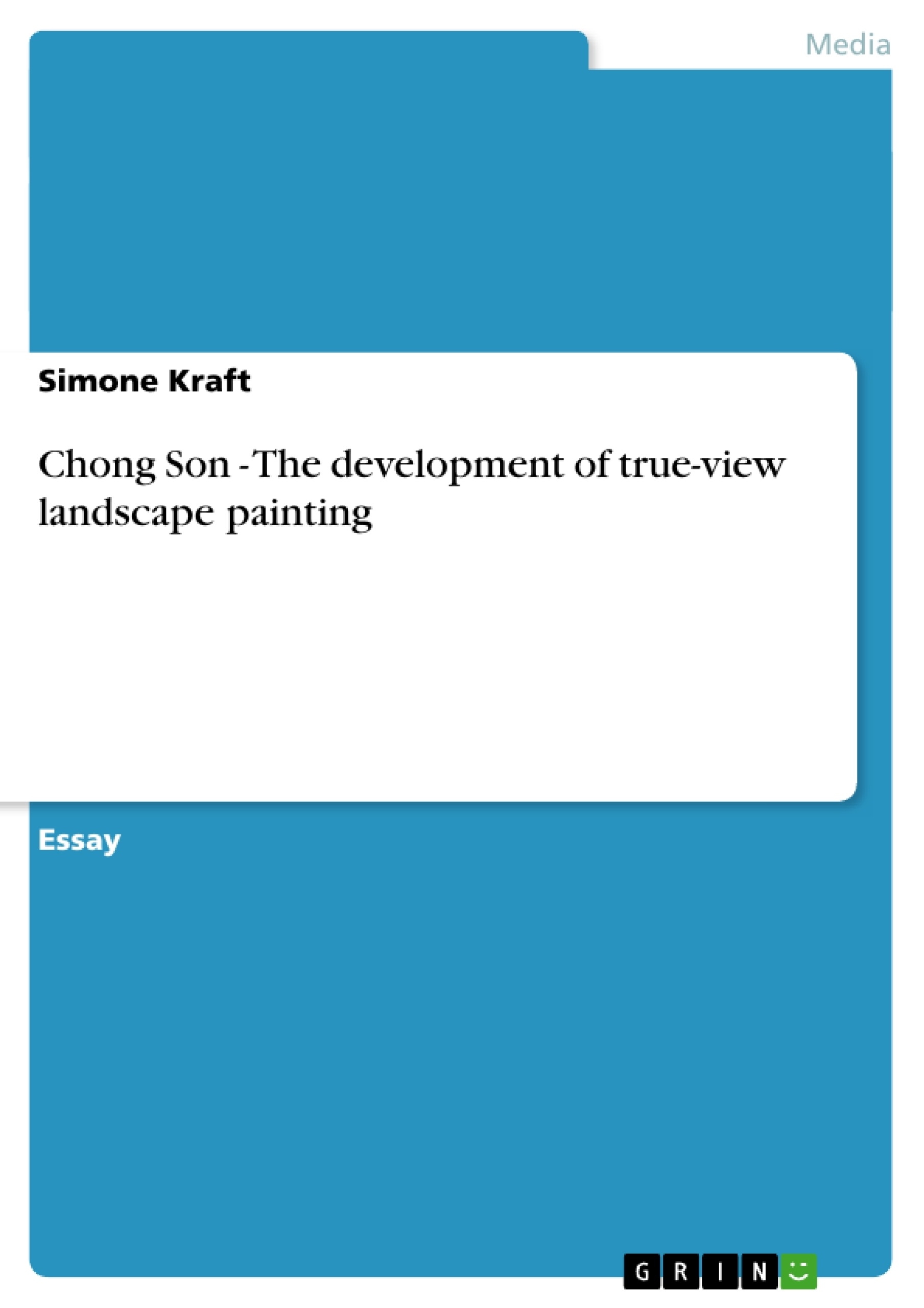In the Chosŏn period (1392-1910), Korean landscape painting flourished. Traditionally strongly bound to a Chinese paradigm, the Korean masters of painting sought to give their works distinctive peculiarities. Especially from the middle of Chosŏn period on, strong tendencies towards “Koreanization” emerged comprising not only arts but all sectors of life. Initially, painting developed slightly different characteristics still within the scope of the paramount Chinese arts such as bolder outlines and coarser brushwork (Pratt, 1995: 43). The painter Chŏng Sŏn (1676-1759) eventually heralded the turn to a typical Korean style of landscape painting, the so-called “chin’gyŏng (sansu)”, true-view landscape painting. Reaching its peak in the following eighteenth century, this genre depicts the beauty of real Korean countryside using a certain technique which bears distinct features, even though still being geared to Chinese example.
Table of Contents
- Introduction
- Short outline: Landscape Painting
- Chŏng Son's development of a distinctive style
- Conclusion: Chin'gyŏng sansu – True-View Landscape Painting
- Literature
Objectives and Key Themes
This essay examines the development of true-view landscape painting in Korea, with a particular focus on the work of Chŏng Son. It explores the historical context that led to the emergence of a uniquely Korean style of landscape painting, drawing on the influences of both Chinese and Korean traditions.
- The evolution of Korean landscape painting from its Chinese roots
- The development of a distinctive Korean style of landscape painting
- The role of Chŏng Son in establishing true-view landscape painting
- The influence of the Sirhak movement on Korean art and culture
- The significance of the “chin'gyong (sansu)” genre in Korean art
Chapter Summaries
- Introduction: This chapter provides an overview of the historical context surrounding the emergence of true-view landscape painting in Korea. It discusses the influence of Chinese art on Korean painting traditions and the shift towards a uniquely Korean style.
- Short outline: Landscape Painting: This chapter delves into the fundamental aspects of landscape painting as a classical category in Chinese and Korean art. It examines the symbolic meanings associated with landscapes and explores the artistic techniques employed by landscape painters.
- Chŏng Son's development of a distinctive style: This chapter explores the life and work of Chŏng Son, focusing on his significant contribution to the development of true-view landscape painting. It highlights the unique characteristics of his style and its impact on Korean art.
Keywords
The essay focuses on key concepts such as Korean landscape painting, Chŏng Son, chin'gyong (sansu), true-view landscape painting, Sirhak movement, Chinese influence, Korean art, artistic autonomy, and cultural identity.
- Quote paper
- M. A. Simone Kraft (Author), 2004, Chong Son - The development of true-view landscape painting, Munich, GRIN Verlag, https://www.grin.com/document/76723




